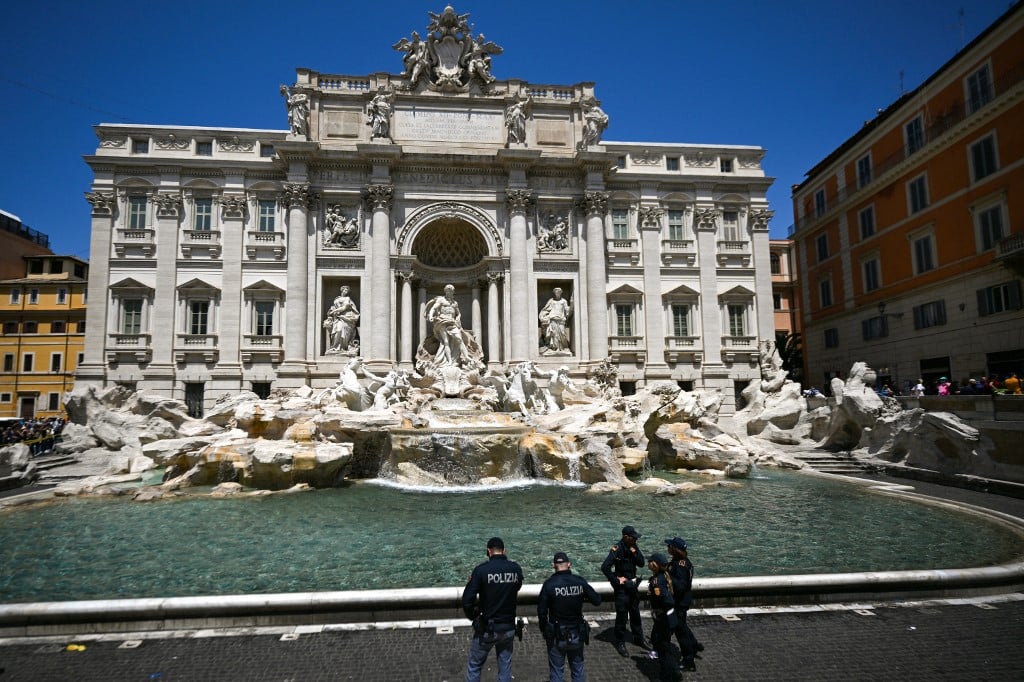What punishments do tourists face if they damage Italian monuments?

A video of a tourist carving his name on the Colosseum’s outer wall sparked outrage across Italy. But how severe are the punishments for those damaging or, in some cases, 'disrespecting' Italian monuments?
A video of a tourist carving his name and that of his girlfriend on the outer wall of Rome’s Colosseum went viral earlier this week as people took to social media to express their outrage over the incident.
Italy’s culture minister Gennaro Sangiuliano joined in the outpouring of indignation as he condemned the event as “serious, undignified and a sign of great incivility”.
Reputo gravissimo, indegno e segno di grande inciviltà, che un turista sfregi uno dei luoghi più celebri al mondo, il Colosseo, per incidere il nome della sua fidanzata. Spero che chi ha compiuto questo gesto venga individuato e sanzionato secondo le nostre leggi. pic.twitter.com/p8Jss1GWuY
— Gennaro Sangiuliano (@g_sangiuliano) June 26, 2023
But the Colosseum incident – currently under investigation by local police authorities – was only the latest in a long series of acts of vandalism that have involved world-famous Italian monuments and artworks over the past few years.
Just to cite a few, in 2018 an Indian tourist removed an entire brick from a Colosseum inner wall to make a “souvenir” of it, whereas two years later, in 2020, two visitors were caught carving their names on a pillar of Rome’s Trevi Fountain.
The same year, an Austrian tourist snapped three toes off an Antonio Canova statue after lying on top of it, while, more recently, an American tourist smashed two 2,000-year-old statues at the Vatican museums after he was reportedly denied a hearing with the Pope.
Under Italian law, anyone found guilty of causing damage to a site of historical and artistic interest in Italy can face fines of up to €15,000 and a jail sentence of up to five years.

Rome's Trevi Fountain has on multiple occasions been the target of vandalism acts from visitors. Photo by Filippo MONTEFORTE / AFP
And these penalties may soon become harsher, as ministers in April approved plans to increase the maximum fines for defacing cultural property to €40,000, whereas people damaging or destroying cultural items could be handed fines of up to €60,000.
Potential prison sentences would also increase to a maximum of seven years.
Besides national laws on acts of vandalism, popular tourism hotspots around the country have long had varying local rules in place aimed at curbing unruly behaviour by visitors.
For instance, tourists every year face fines of hundreds of euros after falling foul of Rome’s strict ban on taking a dip in its public fountains.
And even seemingly innocent behaviours such as sitting on the steps of a famous building or eating on the go while walking down a city centre street can land visitors with hefty fines in some parts of the country.
Comments
See Also
A video of a tourist carving his name and that of his girlfriend on the outer wall of Rome’s Colosseum went viral earlier this week as people took to social media to express their outrage over the incident.
Italy’s culture minister Gennaro Sangiuliano joined in the outpouring of indignation as he condemned the event as “serious, undignified and a sign of great incivility”.
Reputo gravissimo, indegno e segno di grande inciviltà, che un turista sfregi uno dei luoghi più celebri al mondo, il Colosseo, per incidere il nome della sua fidanzata. Spero che chi ha compiuto questo gesto venga individuato e sanzionato secondo le nostre leggi. pic.twitter.com/p8Jss1GWuY
— Gennaro Sangiuliano (@g_sangiuliano) June 26, 2023
But the Colosseum incident – currently under investigation by local police authorities – was only the latest in a long series of acts of vandalism that have involved world-famous Italian monuments and artworks over the past few years.
Just to cite a few, in 2018 an Indian tourist removed an entire brick from a Colosseum inner wall to make a “souvenir” of it, whereas two years later, in 2020, two visitors were caught carving their names on a pillar of Rome’s Trevi Fountain.
The same year, an Austrian tourist snapped three toes off an Antonio Canova statue after lying on top of it, while, more recently, an American tourist smashed two 2,000-year-old statues at the Vatican museums after he was reportedly denied a hearing with the Pope.
Under Italian law, anyone found guilty of causing damage to a site of historical and artistic interest in Italy can face fines of up to €15,000 and a jail sentence of up to five years.

And these penalties may soon become harsher, as ministers in April approved plans to increase the maximum fines for defacing cultural property to €40,000, whereas people damaging or destroying cultural items could be handed fines of up to €60,000.
Potential prison sentences would also increase to a maximum of seven years.
Besides national laws on acts of vandalism, popular tourism hotspots around the country have long had varying local rules in place aimed at curbing unruly behaviour by visitors.
For instance, tourists every year face fines of hundreds of euros after falling foul of Rome’s strict ban on taking a dip in its public fountains.
And even seemingly innocent behaviours such as sitting on the steps of a famous building or eating on the go while walking down a city centre street can land visitors with hefty fines in some parts of the country.
Join the conversation in our comments section below. Share your own views and experience and if you have a question or suggestion for our journalists then email us at [email protected].
Please keep comments civil, constructive and on topic – and make sure to read our terms of use before getting involved.
Please log in here to leave a comment.